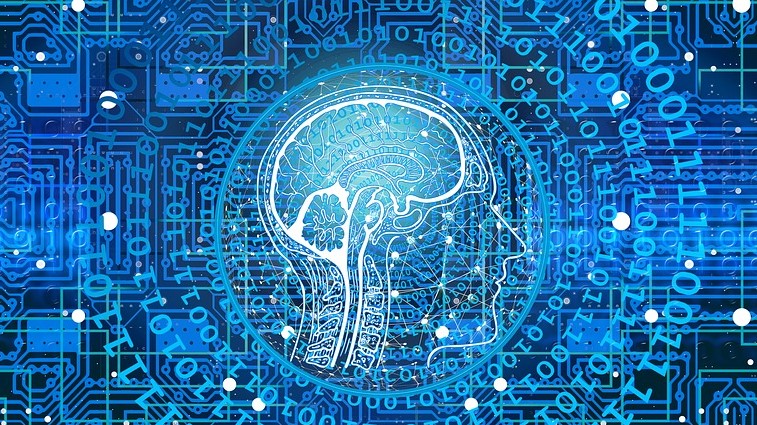As technology advances, so do the methods used by fraudsters to commit financial crimes against the BFSI industry. Fraudulent activities such as money laundering, identity theft, and credit card fraud can cost financial institutions billions of dollars annually. The need for effective fraud detection methods has never been more critical.
In recent years, artificial intelligence (AI) has emerged as a game-changer in fraud detection for BFSI. AI has proved to be more effective than traditional fraud detection methods, which rely on manual processes and human expertise. AI and machine learning algorithms can analyze vast amounts of data and identify patterns that are not easily detectable by humans.
The role of artificial intelligence in fraud detection

AI has revolutionized the BFSI industry by providing new and innovative ways of detecting and preventing fraud. AI-powered fraud detection systems can analyze large volumes of data to identify unusual patterns and behaviours that indicate fraud. AI algorithms can also learn from historical data and adjust their behaviour to improve the accuracy of fraud detection.
AI-powered fraud detection systems can be deployed in real-time to identify and prevent fraudulent transactions before they occur. This is crucial in preventing significant financial losses for financial institutions. AI can also detect fraud in multiple channels, including mobile devices, online banking, and credit cards.
Understanding AI and machine learning in fraud detection

AI is a branch of computer science that involves creating intelligent machines that can perform tasks that typically require human intelligence, such as learning, problem-solving, and decision-making. Machine learning is a subset of AI that involves developing algorithms that can learn from data and improve their accuracy over time.
In the context of fraud detection, machine learning algorithms can analyze vast amounts of historical data to identify patterns and behaviours that are associated with fraudulent activity. Machine learning algorithms can then use this knowledge to identify new cases of fraud in real-time.
Algorithms used in AI for fraud detection

AI-powered fraud detection systems use a wide range of algorithms to detect and prevent fraud. Some of the most common algorithms used in AI for fraud detection include:
- Neural networks: A type of machine learning algorithm that is modelled after the human brain. Neural networks can identify patterns and relationships in data that are not easily detectable by humans.
- Decision trees: A machine learning algorithm that uses a tree-like model of decisions and their possible consequences. Decision trees can be used to identify patterns in data that lead to fraudulent activities.
- Random forests: A machine learning algorithm that combines multiple decision trees to improve the accuracy of fraud detection.
- Logistic regression: A machine learning algorithm that is used to analyze the relationship between a set of variables and a binary outcome, such as fraud or non-fraud.
Benefits of AI in fraud detection

AI-powered fraud detection systems offer several benefits over traditional fraud detection methods. These benefits include:
- Real-time fraud detection: AI-powered fraud detection systems can analyze transactions in real time, allowing financial institutions to identify and prevent fraudulent activities before they occur.
- Improved accuracy: AI algorithms can analyze vast amounts of data and identify patterns that are not easily detectable by humans. This improves the accuracy of fraud detection and reduces false positives.
- Cost-effective: AI-powered fraud detection systems are cost-effective compared to traditional fraud detection methods, which rely on manual processes and human expertise.
- Scalability: AI-powered fraud detection systems can be scaled to handle large volumes of data, making them suitable for financial institutions of all sizes.
Risks and challenges of AI in fraud detection

AI-powered fraud detection systems also pose some risks and challenges. These risks and challenges include:
- Data quality: AI algorithms rely on high-quality data to make accurate predictions. Poor data quality can lead to inaccurate predictions and false positives.
- Bias: AI algorithms can be biased if they are trained on biased data. This can lead to inaccurate predictions and discrimination.
- Interpretability: AI algorithms can be difficult to interpret, making it challenging to understand how they arrive at their predictions.
- Cybersecurity: AI-powered fraud detection systems can be vulnerable to cyber attacks, which can compromise the integrity of the system.
The impact of fraudsters on BFSI

Fraudsters can have a significant impact on the BFSI industry. Fraudulent activities can result in financial losses, damage to reputation, and loss of customer trust. Fraudsters can use a variety of techniques to commit financial crimes, including:
- Identity theft: Fraudsters can steal personal information, such as social security numbers and credit card details, to commit financial crimes.
- Money laundering: Fraudsters can use the BFSI industry to launder money from illegal activities.
- Credit card fraud: Fraudsters can use stolen credit card information to make unauthorized transactions.
- Insider fraud: Employees of financial institutions can commit fraud by abusing their access to sensitive information and systems.
How AI can improve security and risk management in BFSI

AI-powered fraud detection systems can improve security and risk management in the BFSI industry by:
- Identifying unusual patterns and behaviours that indicate fraud: AI algorithms can analyze vast amounts of data to identify unusual patterns and behaviours that indicate fraud. This can help financial institutions identify and prevent fraudulent activities before they occur.
- Automating fraud detection processes: AI-powered fraud detection systems can automate fraud detection processes, reducing the reliance on manual processes and human expertise. This can improve the efficiency of fraud detection and reduce costs.
- Improving customer experience: AI-powered fraud detection systems can improve the customer experience by reducing false positives and improving the accuracy of fraud detection.
Examples of AI in financial crime, predictive analytics, and anomaly detection

AI is being used in various ways to detect and prevent financial crimes, including predictive analytics and anomaly detection. Some examples of AI in financial crime, predictive analytics, and anomaly detection include:
- Transaction monitoring: AI-powered systems can monitor transactions in real-time to identify unusual patterns and behaviours that indicate fraud.
- Predictive analytics: AI algorithms can analyze historical data to identify patterns and behaviours that are associated with fraudulent activities. This knowledge can be used to predict and prevent future cases of fraud.
- Anomaly detection: AI algorithms can identify unusual patterns and behaviours that are not easily detectable by humans. This can help financial institutions identify and prevent fraudulent activities before they occur.
Data analysis and AI in fraud prevention

Data analysis is a crucial component of AI-powered fraud prevention. AI algorithms rely on high-quality data to make accurate predictions. Financial institutions must ensure that they have quality data to ensure the accuracy of fraud detection.
AI algorithms can analyze vast amounts of data to identify patterns and behaviours that are associated with fraudulent activities. This knowledge can be used to predict and prevent future cases of fraud. This allows financial institutions to implement proactive measures to prevent fraud before it occurs.
Technology innovation for AI in fraud detection

The BFSI industry is constantly evolving, and so are the technologies used for fraud detection. Some of the latest technology innovations for AI in fraud detection include:
- Biometric authentication: Biometric authentication uses unique physical characteristics such as fingerprints, iris scans, and facial recognition to verify the identity of customers.
- Blockchain technology: Blockchain technology can be used to create a secure and transparent system that can prevent fraud in the BFSI industry.
- Natural language processing: Natural language processing can be used to analyze unstructured data such as customer complaints and social media posts to identify potential cases of fraud.
Future of AI in BFSI fraud detection

The future of AI in BFSI fraud detection is bright. AI-powered fraud detection systems are becoming more sophisticated, accurate, and efficient. The BFSI industry will continue to leverage AI to detect and prevent financial crimes.
The use of AI in BFSI fraud detection will also continue to evolve, with new technology innovations and advancements in AI algorithms. The BFSI industry must continue to invest in AI-powered fraud detection systems to stay ahead of fraudsters.
Conclusion
AI has emerged as a game-changer in fraud detection for the BFSI industry. AI-powered fraud detection systems offer several benefits over traditional fraud detection methods, including real-time fraud detection, improved accuracy, cost-effectiveness, and scalability.
Despite the risks and challenges associated with AI, the BFSI industry must continue to invest in AI-powered fraud detection systems to stay ahead of fraudsters. The future of AI in BFSI fraud detection is bright, with new technology innovations and advancements in AI algorithms.
Ready to experience the power of Fantail-P? Try it now and see how it can transform your workflow and boost your productivity!


